- Clone
- 1D6 (See other available formats)
- Regulatory Status
- RUO
- Workshop
- HCDM listed
- Other Names
- BAFF, BLYS, TNFSF13b, B cell activating factor, tumor necrosis factor ligand superfamily 13B, B lymphocyte stimulator (BLYS), TNF and APOL-related leukocyte expressed ligand 1 (TALL1), TNF homolog that activates apoptosis, NF-κB and JNK (THANK)
- Isotype
- Mouse IgG1, κ
- Ave. Rating
- Submit a Review
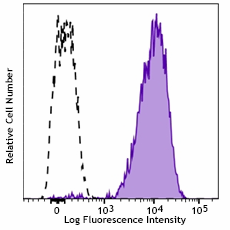
| Cat # | Size | Price | Quantity Check Availability | Save | ||
|---|---|---|---|---|---|---|
| 366511 | 25 tests | 147€ | ||||
| 366512 | 100 tests | 306€ | ||||
BAFF, also known as B cell activating factor, tumor necrosis factor ligand superfamily 13B, B lymphocyte stimulator (BLYS), TNF and APOL-related leukocyte expressed ligand 1 (TALL1), and TNF homolog, activates apoptosis, NF-κB, and JNK (THANK). BAFF is a type II transmembrane protein and is a member of the tumor necrosis factor ligand superfamily. BAFF can be proteolytically cleaved to form a soluble protein. BAFF, like other TNF ligand family members, forms homotrimers. The predicted molecular weight of a BAFF monomer is approximately 31 kD. BAFF is expressed on peripheral blood B and T lymphocytes, monocytes, macrophages, and dendritic cells. It is upregulated by IFN-γ and downregulated by PMA/ionomycin treatment.
Product DetailsProduct Details
- Verified Reactivity
- Human
- Antibody Type
- Monoclonal
- Host Species
- Mouse
- Immunogen
- Human CD257 transfected murine cell line.
- Formulation
- Phosphate-buffered solution, pH 7.2, containing 0.09% sodium azide and BSA (origin USA)
- Preparation
- The antibody was purified by affinity chromatography and conjugated with APC/Cyanine7 under optimal conditions.
- Concentration
- Lot-specific (to obtain lot-specific concentration and expiration, please enter the lot number in our Certificate of Analysis online tool.)
- Storage & Handling
- The antibody solution should be stored undiluted between 2°C and 8°C, and protected from prolonged exposure to light. Do not freeze.
- Application
-
FC - Quality tested
- Recommended Usage
-
Each lot of this antibody is quality control tested by immunofluorescent staining with flow cytometric analysis. For flow cytometric staining, the suggested use of this reagent is 5 µl per million cells in 100 µl staining volume or 5 µl per 100 µl of whole blood.
- Excitation Laser
-
Red Laser (633 nm)
-
Application References
(PubMed link indicates BioLegend citation) -
- Hase H, et al. 2004. Blood 6:2257. (IHC)
- RRID
-
AB_2814320 (BioLegend Cat. No. 366511)
AB_2814321 (BioLegend Cat. No. 366512)
Antigen Details
- Structure
- Type II transmembrane protein and is a member of the tumor necrosis factor ligand superfamily. It can be proteolytically cleaved to form a soluble protein and it forms homotrimers. The predicted molecular weight of monomer is approximately 31 kD.
- Distribution
-
Peripheral blood B and T lymphocytes, monocytes, macrophages, and dendritic cells. Upregulated by IFN-γ and is downregulated by PMA/ionomycin treatment.
- Function
- Stimulates B and T cell immunity, regulates humoral immunity by binding TACI and BCMA receptors, and prevents apoptosis and promotes B cell survival by binding the BAFF-specific receptor (BAFFR/BR3).
- Ligand/Receptor
- BAFF binds to TACI (TNFRSF13B) and BCMA (TNFRSF17) as well as the APRIL ligand. BAFF also binds to the BAFF-specific receptor (BAFFR/BR3).
- Cell Type
- B cells, Dendritic cells, Macrophages, Monocytes, T cells
- Biology Area
- Cell Biology, Costimulatory Molecules, Immunology, Signal Transduction, Stem Cells
- Molecular Family
- CD Molecules, Cytokines/Chemokines, Growth Factors, Soluble Receptors
- Antigen References
-
1. Schneider P, et al. 1999. J. Exp. Med. 189:1747.
2. Moore PA, et al. 1999. Science 285:260.
3. Shu HB, et al. 1999. J. Leuko. Biol. 65:680.
4. Yu G, et al. 2000. Nat. Immunol. 1:252.
5. Oren DA, et al. 2002. Nat. Struct. Biol. 9:288. - Gene ID
- 10673 View all products for this Gene ID
- UniProt
- View information about CD257 on UniProt.org
Related FAQs
Other Formats
View All CD257 Reagents Request Custom Conjugation| Description | Clone | Applications |
|---|---|---|
| Purified anti-human CD257 (BAFF, BLYS) | 1D6 | FC,IHC-P |
| Biotin anti-human CD257 (BAFF, BLYS) | 1D6 | FC |
| PE anti-human CD257 (BAFF, BLYS) | 1D6 | FC |
| APC anti-human CD257 (BAFF, BLYS) | 1D6 | FC |
| APC/Cyanine7 anti-human CD257 (BAFF, BLYS) | 1D6 | FC |
| TotalSeq™-C0863 anti-human CD257 (BAFF, BLYS) | 1D6 | PG |
| TotalSeq™-B0863 anti-human CD257 (BAFF, BLYS) | 1D6 | PG |
Compare Data Across All Formats
This data display is provided for general comparisons between formats.
Your actual data may vary due to variations in samples, target cells, instruments and their settings, staining conditions, and other factors.
If you need assistance with selecting the best format contact our expert technical support team.
-
Purified anti-human CD257 (BAFF, BLYS)
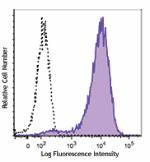
Human CD257-transfected bovine coronary artery endothelial c... -
Biotin anti-human CD257 (BAFF, BLYS)
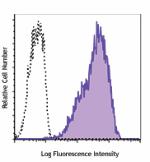
Human CD257-transfected bovine coronary artery endothelial c... -
PE anti-human CD257 (BAFF, BLYS)
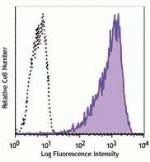
Human CD257-transfected bovine coronary artery endothelial c... -
APC anti-human CD257 (BAFF, BLYS)

Human CD257-transfected bovine coronary artery endothelial c... -
APC/Cyanine7 anti-human CD257 (BAFF, BLYS)
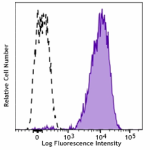
Human CD257-transfected bovine coronary artery endothelial c... -
TotalSeq™-C0863 anti-human CD257 (BAFF, BLYS)
-
TotalSeq™-B0863 anti-human CD257 (BAFF, BLYS)

 Login / Register
Login / Register 














Follow Us